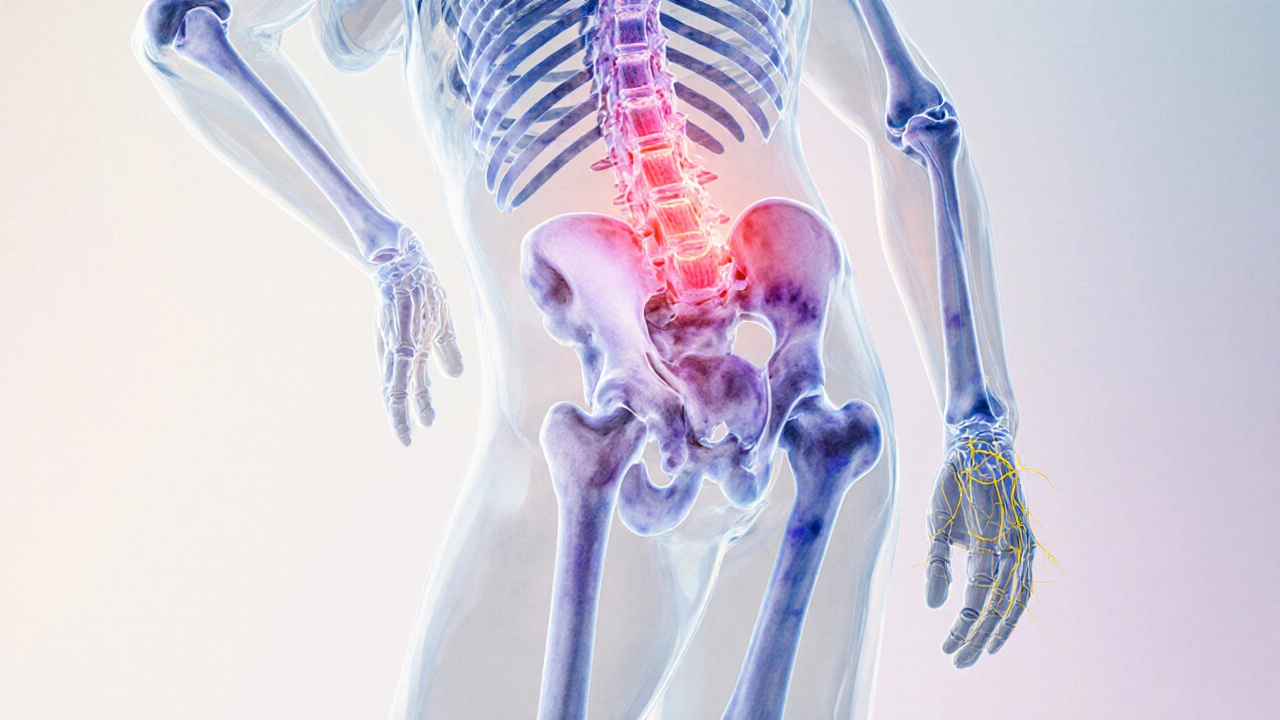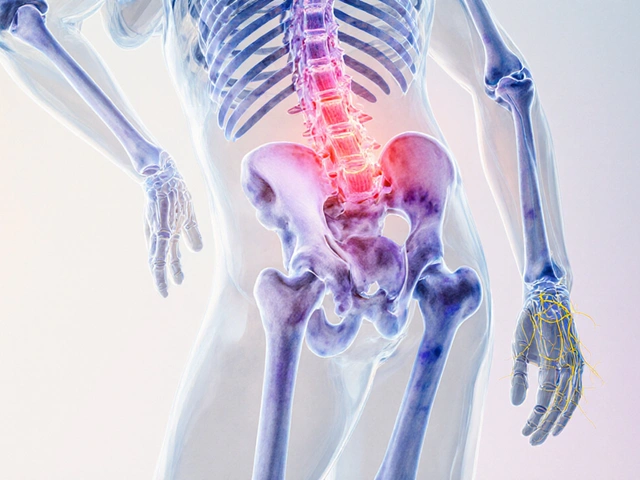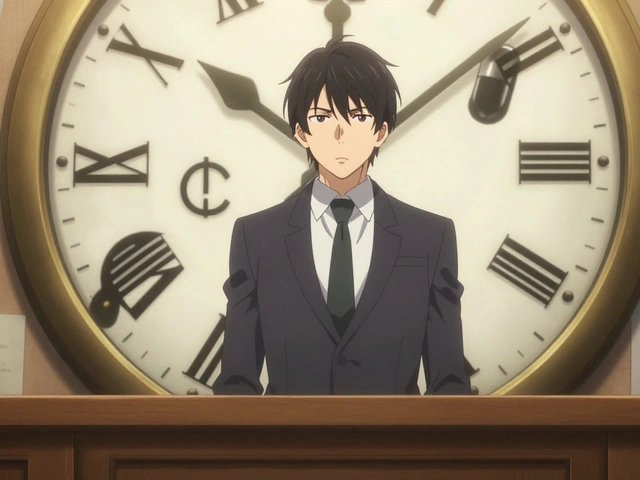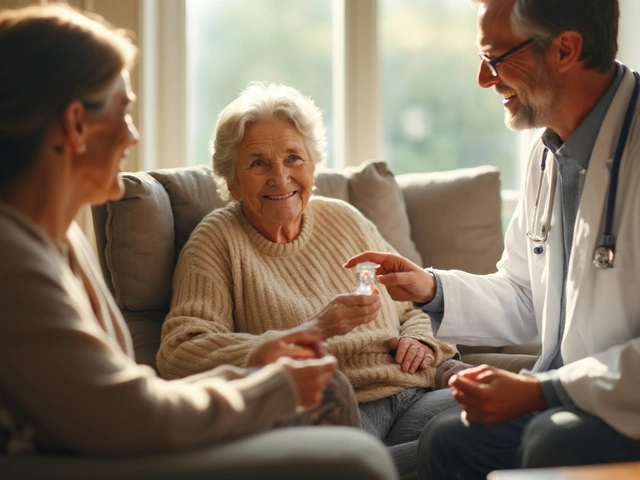Bone Health Symptom Checker
Select Your Symptoms:
Risk Factors:
Your Results
Select your symptoms and click "Analyze My Symptoms" to get personalized insights.
When it comes to staying active, catching bone damage any condition that weakens or injures the skeletal structure early can save you from painful setbacks.
early signs of bone damage often hide behind everyday aches, so knowing what to look for is key. This guide walks you through the most common warning signals, explains why they happen, and tells you when it’s time to call a professional.Why Early Detection Matters
Our skeleton supports every move we make. Once a bone starts to deteriorate, the damage can accelerate, especially if the underlying cause-like low calcium or hormonal changes-is left unchecked. Early recognition lets you intervene with lifestyle tweaks, supplements, or medical treatment before a fracture or chronic pain sets in.
Common Early Signs to Watch For
Not all aches are created equal. Below are the signals that most often signal the onset of bone damage.
- Persistent, dull pain in the spine, hips, wrists, or knees that doesn’t improve with rest.
- Unexpected stiffness after short periods of inactivity, especially in the morning.
- Minor bruising or swelling around joints without a clear injury.
- Loss of height or a noticeable curvature in the back, sometimes described as a “stooped” posture.
- Reduced grip strength or difficulty lifting familiar objects.
- Numbness or tingling in the limbs, which can indicate nerve compression from weakened vertebrae.
Key Risk Factors That Amplify Those Signs
Understanding why these symptoms appear helps you gauge how serious they might be.
- Age: Bone density naturally declines after age 30, accelerating after menopause for women.
- Nutrition: Low intake of calcium the mineral essential for bone mineralization and vitamin D the vitamin that aids calcium absorption speeds up bone loss.
- Lifestyle: Smoking, excessive alcohol, and sedentary habits erode bone quality.
- Medical conditions: Chronic illnesses like rheumatoid arthritis, hyperthyroidism, or long-term steroid use increase vulnerability.
- Family history: Genetics play a role; having a parent with osteoporosis raises your risk.
How to Self‑Check: A Simple Step‑by‑Step Routine
While nothing replaces a professional exam, you can perform a quick at‑home assessment to see if you need further evaluation.
- Stand straight with your back against a wall. If there’s a noticeable gap between the wall and the back of your head or shoulders, note it.
- Measure your height now and again in six months; a drop of more than 1‑2cm could signal vertebral compression.
- Press gently on the tops of your forearms, shins, and heels. Tenderness may hint at micro‑fractures.
- Try a light grip test: squeeze a soft ball for ten seconds. Sudden fatigue may reflect weakened bone‑muscle coordination.
- Record any unexplained joint pain, especially if it wakes you at night.
If you tick two or more boxes, schedule a professional evaluation.

Medical Tests That Confirm Early Damage
Doctors use several diagnostic tools to quantify bone health.
- Bone density test a non‑invasive scan measuring mineral content in bones, most commonly a DEXA scan dual‑energy X‑ray absorptiometry that provides a T‑score for osteoporosis assessment.
- Standard X‑ray imaging can reveal existing fractures or vertebral compression.
- Blood tests that check calcium, vitamin D, and markers of bone turnover (like osteocalcin).
- In complex cases, a CT or MRI may be ordered to view subtle stress fractures.
Results are interpreted by an orthopedic doctor a specialist focusing on musculoskeletal disorders or a rheumatologist.
Preventive Steps to Halt Progression
Once you’ve identified early signs, act fast.
- Boost calcium intake: Aim for 1,200mg daily through dairy, leafy greens, or fortified alternatives.
- Ensure adequate vitamin D: 800-1,000IU per day, either via sunlight exposure or supplements.
- Weight‑bearing exercise: Walking, dancing, or resistance training stimulates bone remodeling.
- Quit smoking and limit alcohol: Both directly degrade bone matrix.
- Medication review: Discuss any long‑term steroid or anticonvulsant use with your physician; alternatives may exist.
Quick Reference Table
| Sign | Likely Underlying Cause | Suggested Action |
|---|---|---|
| Persistent dull pain in hip or spine | Osteoporosis or early stress fracture | Schedule a DEXA scan; start weight‑bearing activity |
| Morning stiffness lasting >30min | Joint inflammation linked to bone loss | Increase vitamin D; consider anti‑inflammatory diet |
| Unexplained bruising/swelling | Micro‑fractures or reduced periosteal strength | Consult orthopedist; avoid high‑impact sports |
| Height loss or stooped posture | Vertebral compression fractures | DEXA assessment; physical therapy for posture |
| Reduced grip strength | Muscle‑bone disuse atrophy | Resistance training; ensure adequate protein |
When to Seek Professional Help Immediately
Time‑sensitive red flags include:
- Sudden, severe pain after a minor bump.
- Visible bone deformity or an open wound over a bone.
- Persistent night pain that wakes you.
- New numbness or weakness in the arms or legs.
These symptoms may indicate an acute fracture or a serious underlying condition that needs urgent attention.
Frequently Asked Questions
Can I have bone damage without any pain?
Yes. Early osteoporosis often progresses silently. That’s why routine bone density screening is recommended for at‑risk adults, even if they feel fine.
How accurate is a DEXA scan for detecting early damage?
DEXA is the gold standard for measuring bone mineral density. It can spot a T‑score of -1.0 to -2.5, indicating osteopenia, well before a fracture occurs.
Are over‑the‑counter calcium supplements enough?
For most adults, a well‑balanced diet paired with 500-600mg of supplemental calcium works. However, people with low dietary intake or high risk may need higher doses under a doctor’s guidance.
Is exercise safe if I suspect early bone damage?
Low‑impact, weight‑bearing activities like walking, swimming, and resistance bands are generally safe and actually promote bone strength. Avoid high‑impact or twisting motions until a professional evaluation clears you.
What’s the difference between a stress fracture and a regular fracture?
A stress fracture is a tiny crack caused by repetitive loading, often without a sudden injury, whereas a regular fracture typically results from a single, high‑force impact.








Ginny Gladish
October 4, 2025 AT 00:06The article presents a respectable overview, yet it glosses over the quantitative thresholds that differentiate osteopenia from osteoporosis. A more rigorous inclusion of BMD z‑score ranges would bolster its clinical utility. Additionally, the symptom checklist is overly generic; a stratified risk model would be preferable. Overall, the piece is informative but could benefit from deeper statistical grounding.
Faye Bormann
October 5, 2025 AT 03:53Alright, let me take a step back and dissect why this guide, while well‑intentioned, feels like it’s trying to be everything at once. First, the tone swings from a clinical manual to a lifestyle blog, which can confuse readers looking for hard data. Second, the suggested "weight‑bearing exercises" lack specificity – are we talking about daily 30‑minute walks or high‑intensity plyometrics? Third, the calcium recommendations ignore the nuanced differences between dietary sources and supplements, which have distinct absorption rates. Fourth, the section on "micro‑fractures" could have referenced recent imaging studies that show MRI’s superiority over plain X‑ray in early detection. Fifth, the risk factor matrix would be more helpful if it included a scoring algorithm rather than a simple checklist.
Now, let’s talk about the user interface. The interactive symptom cards are cute, but the underlying logic is oversimplified: three symptoms automatically trigger a "high risk" label, disregarding the relative weight of each sign. For instance, persistent dull pain in the spine carries more prognostic significance than occasional bruising. Sixth, the guide mentions vitamin D dosing but fails to address the variability in individual serum levels, which can dramatically affect the needed supplementation.
Seventh, the advice to "quit smoking and limit alcohol" is sound, yet it omits the impact of chronic corticosteroid use, a major iatrogenic cause of bone loss. Eighth, the recommended DEXA scan frequency is missing; patients over 50 should have baseline scans, but the guide says nothing about follow‑up intervals.
Ninth, the language used in the FAQ is too generic – phrases like "yes, you can have bone damage without any pain" are trite and add little educational value. Tenth, the article could benefit from linking to peer‑reviewed sources, which would enhance credibility.
Eleventh, the table formatting breaks on mobile devices, making it difficult for users to compare signs and actions side by side. Twelfth, the “quick reference” omits a row for "reduced grip strength," which is a key early indicator for many clinicians.
Thirteenth, the section on blood tests mentions calcium and vitamin D but neglects markers like P1NP and CTX, which can provide insight into bone turnover.
Fourteenth, there is an alarming lack of emphasis on personalized medicine – genetic predisposition is mentioned only in passing, despite its growing relevance.
Fifteenth, the article’s concluding call to action is weak; a stronger push toward regular screening appointments would likely improve outcomes.
In summary, while the guide covers many bases, it suffers from a lack of depth, inconsistent tone, and missed opportunities for precision. A revision that tightens focus, adds nuanced recommendations, and backs claims with solid references would transform it from a good overview into an indispensable resource.
rachel mamuad
October 6, 2025 AT 07:39I totally get the vibe of the guide, but there are a few things that could be polished up. The microfracture pathophysiology section could use more layman’s terms – not everyone is comfy with "osteoclastic activity" jargon. Also, the checklist seems to assume that all users have equal health literacy – teh wording could be simplified a bit. And defintely, an app version would make the symptom tracker more accesible.
Amanda Anderson
October 7, 2025 AT 11:26Whoa, this really hits home! I’ve felt that strange ache in my lower back for weeks and just brushed it off, thinking it was just a bad posture day. Reading about the "persistent dull pain" made me realize it might be something more serious. The dramatic shift from everyday ache to potential bone damage is super eye‑opening. It’s kind of scary but also empowering – now I know what to watch for. Thanks for laying it out in a way that even a non‑expert can grasp.
Deborah Escobedo
October 8, 2025 AT 15:13Great overview, very helpful.
Dipankar Kumar Mitra
October 9, 2025 AT 18:59We often wander through life like ghosts, unaware that the very skeleton holding us together is silently pleading for attention. The bones, those silent sentinels, whisper through pain, stiffness, and loss of height – a language we choose to ignore. By confronting these subtle cues, we reclaim agency over our future, turning anxiety into action. It's not just about supplements; it's a philosophical stance against complacency. So, listen to the architecture of your body before it collapses under neglect.
Tracy Daniels
October 10, 2025 AT 22:46Hey folks! 🌟 This guide is a solid start, but remember that each person's journey is unique. If you’re unsure, always reach out to a healthcare professional – they can tailor advice just for you. Stay proactive and keep those bones strong! 😊
Hoyt Dawes
October 12, 2025 AT 02:33While the guide offers a commendable overview, its attempt to be all‑inclusive renders it somewhat diluted. The prose oscillates between medical precision and layman simplification, leaving the discerning reader yearning for depth. One might argue the recommendation to "increase calcium" is a trite admonition, overlooking nuanced considerations such as bioavailability, renal handling, and the interplay with magnesium. Furthermore, the suggestion of "weight‑bearing exercise" is vague – a connoisseur would demand specifics of load, frequency, and progressive overload. In essence, the piece feels like a watered‑down lecture fit for a generic audience, lacking the rigor expected by the informed.
Jeff Ceo
October 13, 2025 AT 06:19The article is fine but could use more concrete data and fewer vague statements.
David Bui
October 14, 2025 AT 10:06Honestly, it's a bit of a mess – the guide jumps from "bone density test" to "vitamin D" without any logical progression. Also, the use of "etc" in a medical context is sloppy; specifics matter. You need to tighten the narrative and keep the formatting consistent.
Alex V
October 15, 2025 AT 13:53Wow, another piece glorifying the mainstream medical narrative while conveniently ignoring the hidden agenda of big pharma. It's amazing how they push calcium supplements like they're the holy grail, yet never mention the eco‑political implications of mining limestone. And don't get me started on DEXA scans – controlled by corporations that want us all dependent on their pricey equipment. Sure, get your bone density checked, but remember who's really cashing in.
Robert Jackson
October 16, 2025 AT 17:39Ths guide is o.k but the grammer is off and the metal preference for "calcum" is weird.